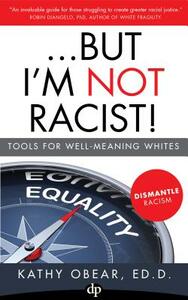Take a photo of a barcode or cover
I'm certainly glad to see a white author taking on this difficult topic. While the second half of the book contains concrete dialogue examples for addressing various types of racist behaviors that white people typically engage in, the book overall was rather vague. As a matter of personal taste, the level of angst was rather high for me. I bathe for sure spent plenty of moments in guilt and sadness over my own internalized white supremacy, but the author seems particularly fragile.
I am always looking for new materials to promote social justice. This one was (at the time) free, and I found it on social media.
I think the only chapters that had any merit, really, were chapters one, six and seven. Chapters three through five were a painful amount of groveling and anecdotal examples with no depth or explanation given.
Of the parts that were good:
-I think it does a decent job of giving a few working definitions of racism and privilege, though I've absolutely seen better (free) ones.
-I did really enjoy the parts about communicating discomfort as a white person in a racially charged situation, and allowing people to feel discomfort without shaming them. I think these (maybe 8 pages) were my biggest takeaway.
Really big problems:
-You don't call people just by their race! Not offended to be called "a white," I suppose, but you don't get to do that with other races, and it is a really poor example to set someone up that way. White people. White actors. White employers.
-The definitions didn't come until chapter six. The author harps on white fragility and privilege and microaggressions, but we don't actually learn about those until four chapters later. It appears that this author intended her work to be for people who know enough about racial issues to have the vocabulary, but not aware enough to feel safe expressing personal discomfort with some of the issues without being told in excruciating detail how the author could relate.
-There were plugs for her website and other people's more comprehensive works littered throughout in a sales-pitchy way. I would have preferred just to have had the information reiterated.
I think the only chapters that had any merit, really, were chapters one, six and seven. Chapters three through five were a painful amount of groveling and anecdotal examples with no depth or explanation given.
Of the parts that were good:
-I think it does a decent job of giving a few working definitions of racism and privilege, though I've absolutely seen better (free) ones.
-I did really enjoy the parts about communicating discomfort as a white person in a racially charged situation, and allowing people to feel discomfort without shaming them. I think these (maybe 8 pages) were my biggest takeaway.
Really big problems:
-You don't call people just by their race! Not offended to be called "a white," I suppose, but you don't get to do that with other races, and it is a really poor example to set someone up that way. White people. White actors. White employers.
-The definitions didn't come until chapter six. The author harps on white fragility and privilege and microaggressions, but we don't actually learn about those until four chapters later. It appears that this author intended her work to be for people who know enough about racial issues to have the vocabulary, but not aware enough to feel safe expressing personal discomfort with some of the issues without being told in excruciating detail how the author could relate.
-There were plugs for her website and other people's more comprehensive works littered throughout in a sales-pitchy way. I would have preferred just to have had the information reiterated.
Really more of a 2.5, but I'm rounding up because it IS a good thing that a white author is alleviating the burden of emotional labor on people of color without insisting on centering herself as WORLD'S GREATEST ALLY.
Definitely a good starter book, but I wish it went a little more in depth.
This book helped me do some self work, but I was waiting for more depth.
I wanted this to be more than it was. It was mostly a rambling, groveling account of white guilt interspersed with infomercials to take her social justice trainings. Her techniques for confronting and resolving racism in white people were only vaguely alluded to and that was frustrating. The only takeaway I really got was in considering the IMPACT of statements instead of the INTENT as a means to head off "but I didn't mean it like that".
I appreciate white people speaking up on racism and trying to help other white people do better. There is some useful information in this book for that purpose, but for me, much of it feels almost buried under the constant narrative of fragility. I would have liked something more practical and less personal. I appreciated the read, I just didn’t enjoy it.
This book was like a punch to the gut in several places. It makes you really think about your own attitudes and actions and how they affect others. Great read!
Repeat info for me, but still a good concise intro to some ideas about modern racism for family members who haven't been updated for a while
Deeply reflective. The models are a bit underdeveloped. It took until Chapters 5 and 6 to really become a useful tool, though.


